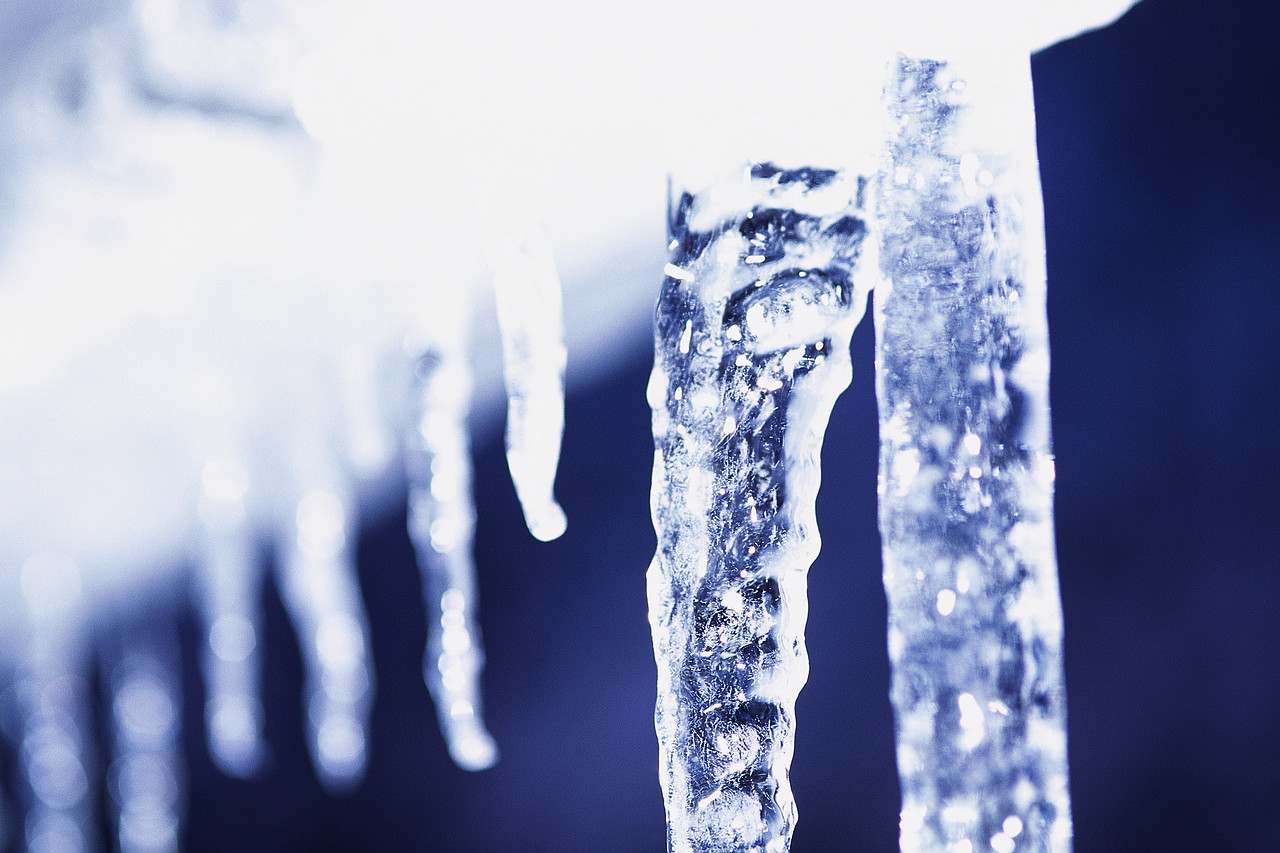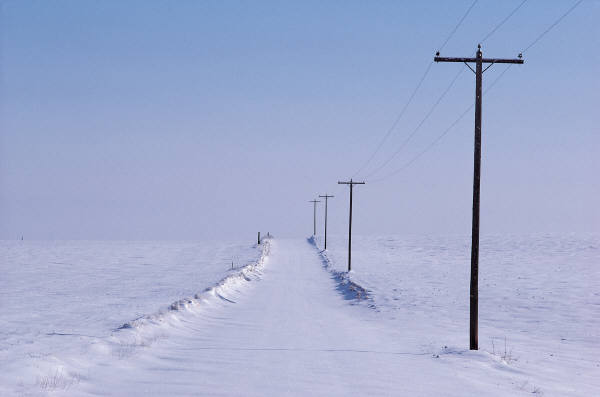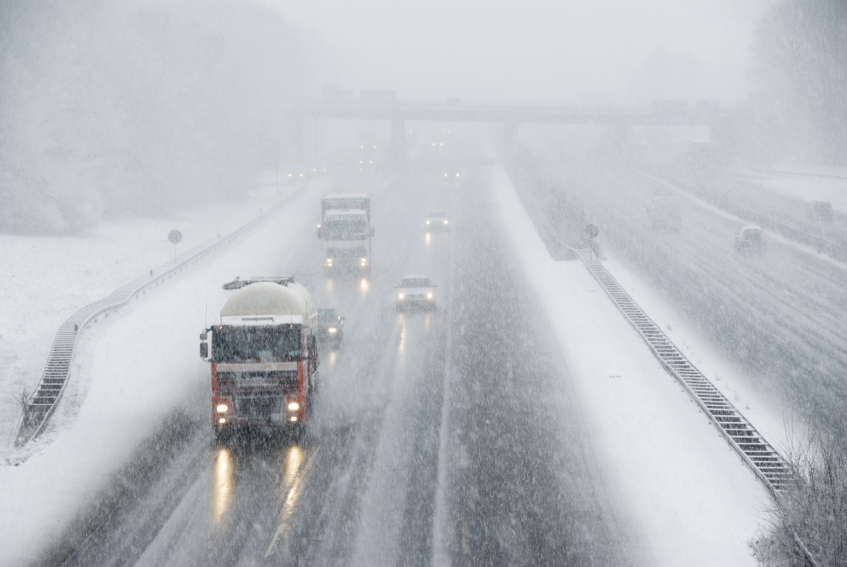Each year, the National Weather Service issues numerous watches, warnings and advisories. Knowledge of those products is a critical element in winter weather preparations.
- Winter Storm Watch - Adverse winter weather (heavy snow, blizzard) is expected within the next two days, but the exact timing, location or occurrence of the storm is still uncertain. This is the time to get prepared for the storm.

- Winter Storm Warning - Hazardous winter weather is likely. If not already occurring, it is expected to occur within 6 to 24 hours. Travel will be hazardous, if not impossible. You should be ready for the storm by this time. Stay indoors!
- Blizzard Warning - The most dangerous of all winter weather will occur in your area. A combination of winds 35 mph or greater and significant snow and/or blowing snow with visibilities less than ¼ mile for three or more hours is expected in the warning area. Blinding snow ("white out"), deep drifts and life threatening wind chill will occur. Travel will be dangerous and should not be attempted. You should seek refuge immediately!
- Winter Weather Advisory - Winter weather conditions are expected to cause significant inconveniences and may be hazardous. If caution is exercised, these situations should not become life threatening. The greatest hazard is often to motorists.
Things to do at home or work BEFORE a winter storm strikes...
Primary concerns are the potential loss of heat, power, telephone service, and a shortage of supplies if storm conditions continue for more than a day.
Have available:
- Flashlight(s) and extra batteries.
- Battery-powered Weather Radio and portable radio. These are used to receive emergency information. They may be your only link to the outside.
- Extra food and water. High-energy food, such as dried fruit or candy, and food requiring no cooking or refrigeration is best.
- Extra medicine and baby items.
- First-aid supplies.
- Emergency heating source, such as a fireplace, wood stove, space heater, etc. Make sure you know how to uses the heating sources to prevent a fire and make sure you have proper ventilation.
- Fire extinguisher and smoke detector. Test units regularly
to ensure they are working properly. Replace batteries the same weekend as the time change occurs in the spring (daylight-savings time) and fall (standard time).
On the farm....
- Move animals to sheltered areas. Shelter-belts, properly laid out and oriented, are better protection for cattle than confining shelters, such as sheds.
- Haul extra feed to nearby feeding areas.
- Have a water supply available. Most animal deaths in winter storms are from dehydration.
- Heating fuel. Fuel carriers may not reach you for days after a severe winter storm. Stay alert to changing weather conditions throughout the winter to maintain an adequate fuel supply in advance of severe weather moving into the area.
WINTER PRECIPITATION TERMS:
Snow
- Flurries - Light snow falling for short durations. No accumulation or light dusting is all that is expected.
- Showers - Snow falling at varying intensities for brief periods of time. Some accumulation is possible.
- Squalls - Brief, intense show showers accompanied by strong, gusty winds. Accumulation may be significant. Snow squalls are best known in the Great Lakes region.
- Blowing Snow - Wind-driven snow that reduces visibility and causes significant drifting. Blowing snow may be snow that is falling and/or loose snow on the ground picked up by the wind.
- Blizzard - Winds over 35 mph with snow and blowing snow reducing visibility to near zero.
Sleet
Is formed by raindrops that freeze into ice pellets before reaching the ground. Sleet usually bounces when hitting a surface and does not stick to objects. However, it can accumulate like snow and cause a hazard to motorists.
Freezing Rain
Is rain that falls onto a surface that has a temperature below freezing. This causes it to freeze to surfaces, such as trees, cars, and roads, forming a coating or glaze of ice. Even small accumulations of ice can cause a significant hazard.
Wind Chill
The wind chill is based on the rate of heat loss from exposed skin caused by combined effects of wind and cold. As the wind increases, heat is carried away from the body at an accelerated rate, driving down the body temperature. Animals are also affected by wind chill.
WINTER DRIVING
The leading cause of death during winter storms is transportation accidents. Preparing your vehicle for the winter season and knowing how to react if stranded or lost on the road are the keys to safe winter driving.
Have a mechanic check the following items on your car:
- Battery

- Antifreeze
- Wipers and windshield washer fluid
- Ignition system
- Thermostat
- Lights
- Flashing hazard lights
- Exhaust system
- Heater
- Brakes
- Defroster
- Oil level (if necessary, replace existing oil with a winter grade oil or the SAE 10w/30 weight variety)
- Install good winter tires. Make sure the tires have adequate tread. All-weather radials are usually adequate for most winter conditions.
- Keep a windshield scraper and small broom for ice and snow
removal.
- Maintain at least a half tank of gas during the winter season.
- Plan long trips carefully. Listen to the radio or Call 511 from anywhere in Nebraska for Nebraska Traveler information for the latest road conditions. Always travel during daylight and, if possible, try not to travel alone.
- Let someone know your timetable and primary and alternate
routes.
- Dress to fit the season. Wear loose-fitting, light-weight, warm clothing in several layers. Trapped air insulates. Layers can be removed to avoid perspiration and subsequent chill. Outer garments should be tightly woven, water repellent and hooded. Wear a hat. Half your body heat loss can be from the head. Cover your mouth to protect your lungs from extreme cold. Mittens, snug at the wrist, are better than gloves. Try to stay dry.
- Carry food and water. Store a supply of high-energy "munchies" and several bottles of water.
Carry a WINTER STORM SURVIVAL KIT in your vehicle that includes:
- Flashlights with extra batteries
- First aid kit with pocket knife
- Necessary medications
- Several blankets
- Sleeping bags
- Extra newspapers for insulation
- Plastic bags (for sanitation)
- Matches
- Extra set of mittens, socks, and a wool cap
- Rain gear and extra clothes
- Small shovel
- Small sack of sand for generating traction under wheels
- Small tools (pliers, wrench, screwdriver)
- Booster cables
- Set of tire chains or traction mats
- Cards, games, and puzzles
- Brightly colored cloth for a flag
- Canned fruit and nuts
- Non-electric can opener
- Bottled water
IF TRAPPED IN CAR DURING A BLIZZARD:
- Stay in the car. Do not leave the car to search for assistance unless help is visible within 100 yards. You may become disoriented and lost in blowing and drifting snow.
- Display a trouble sign. Hang a brightly colored cloth on the radio antenna and raise the car hood.
- Occasionally run engine to keep warm. Turn on the car's engine for about 10 minutes each hour. Run the heater when the car is running. Also, turn on the car's dome light when the car is running. Beware of carbon monoxide poisoning. Keep the exhaust pipe clear of snow and open a downwind
window slightly for ventilation.
- Watch for signs of frostbite and hypothermia.
- Do minor exercises to keep up circulation. Clap hands and move arms and legs occasionally. Try not to stay in one position for too long.
- If more than one person is in the car, take turns sleeping.
- For warmth, huddle together. Use newspapers, maps, and even the removable car mats for added insulation.
- Avoid overexertion. Cold weather puts an added strain on the heart. Unaccustomed exercise such as shoveling snow or pushing a car can bring on a heart attack or make other medical conditions worse. Be aware of symptoms of dehydration.